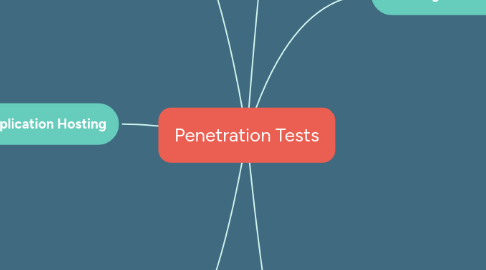
1. Misc Testing
1.1. Check for Dom-based attacks
1.2. Check for frame injection
1.3. Check for local privacy vulnerabilities
1.3.1. Persistent cookies
1.3.2. Cache control
1.3.3. Sensitive data in URL parameters
1.3.4. Forms with Autocomplete
1.4. Follow up information leakage
1.5. Weak SSL Ciphers
2. Application Hosting
2.1. Test segregation in shared infrastructures
2.2. Test segregation between ASP-hosted applications
2.3. Test for web server vulnerabilities
2.3.1. Default credentials
2.3.2. Default content
2.3.3. Dangerous HTTP methods
2.3.4. Proxy functionality
2.3.5. Virtual hosting mis-configuration
2.3.6. Bugs in web server software
3. Application Logic
3.1. Identify the logic attack surface
3.2. Test transmission of data via the client
3.3. Test for reliance on client-side input validation
3.4. Test any thick-client components (Java, ActiveX, Flash)
3.5. Test multi-stage processes for logic flaws
3.6. Test handling of incomplete input
3.7. Test trust boundaries
3.8. Test transaction logic
4. Recon & Analysis
4.1. Map Visible Content
4.2. Discover Hidden & Default Content
4.3. Test for debug parameters
4.4. Identify data entry points
4.5. Identify the technologies used
4.6. Map the attack surface
5. Handling of Access
5.1. Authentication
5.1.1. Test password quality rules
5.1.2. Test for username enumeration
5.1.3. Test resilience to password guessing
5.1.4. Test any account recovery function
5.1.5. Test any "remember me" function
5.1.6. Test any impersonation function
5.1.7. Test username uniqueness
5.1.8. Check for unsafe distribution of credentials
5.1.9. Test for fail-open conditions
5.1.10. Test any multi-stage mechanisms
5.2. Session Handling
5.2.1. Test tokens for meaning
5.2.2. Test tokens for predictability
5.2.3. Check for insecure transmission of tokens
5.2.4. Check for disclosure of tokens in logs
5.2.5. Check mapping of tokens to sessions
5.2.6. Check session termination
5.2.7. Check for session fixation
5.2.8. Check for cross-site request forgery
5.2.9. Check cookie scope
5.3. Access Controls
5.3.1. Understand Access Control Requirements
5.3.2. Test effectiveness of controls, using multiple accounts if possible
5.3.3. Test for insecure access control methods (request parameters, referrer headers, etc)
6. Handling of Input
6.1. Fuzz all request parameters
6.2. Test for SQL injection
6.3. Identify all reflected data
6.3.1. Tet for reflected XXS
6.3.2. Test for HTTP header injection
6.3.3. Test for arbitrary redirection
6.3.4. Test for stored attacks
